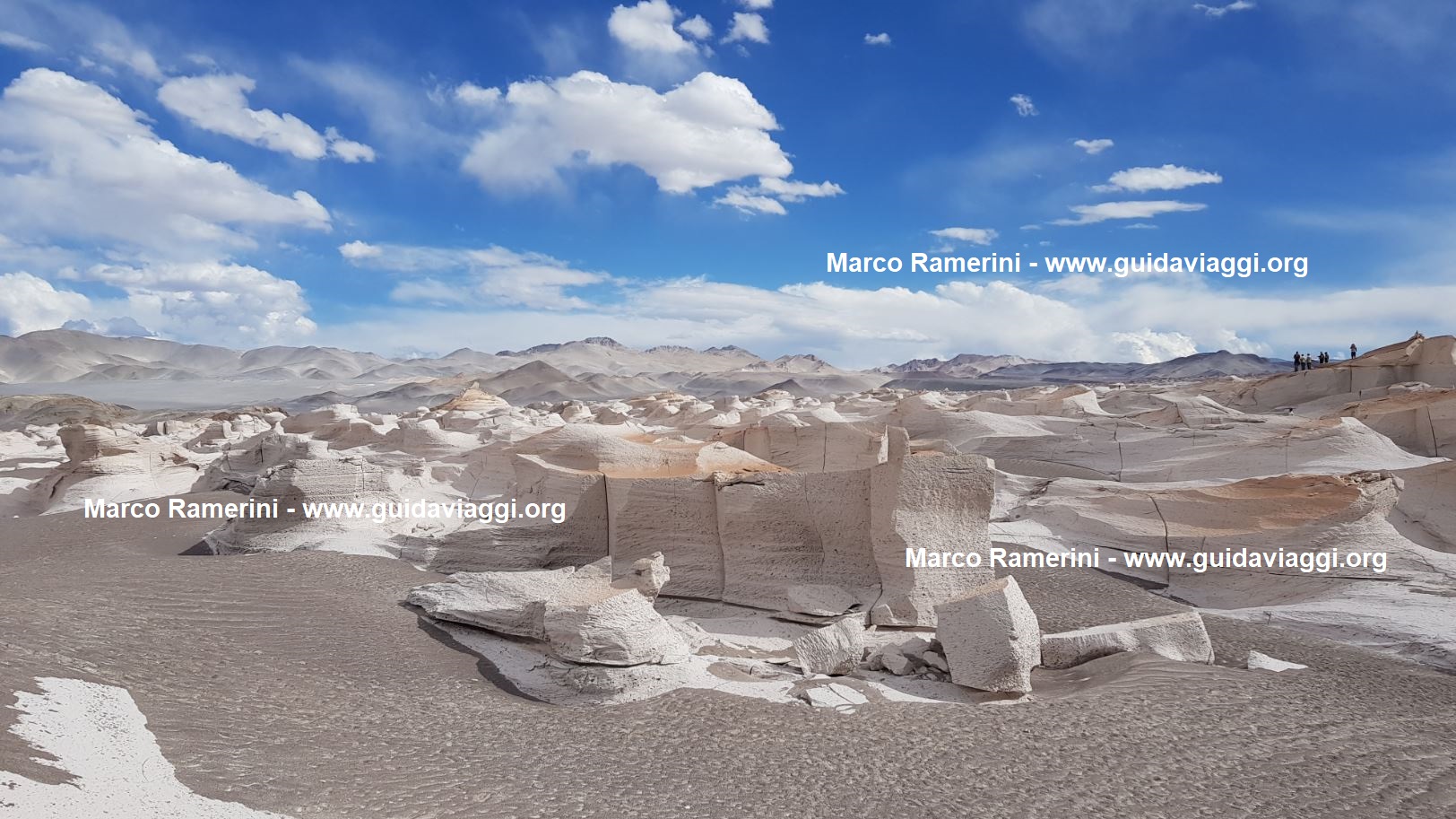This post is also available in:
![]() Deutsch
Deutsch ![]() Italiano
Italiano ![]() Português
Português ![]() Español
Español
Exploring the Puna, the northern plateau of Argentina along the Andes mountain range, you encounter landscapes that seem to be from another planet. One of these unique places is located about 40 kilometers from the small village of El Peñón. It is a natural place that alone is worth the trip, the so-called Pumice Stone Field (Campo de Piedra Pómez). A protected area located at an altitude varying between 3,000 and 4,000 meters above sea level where volcanic eruptions have left an extensive accumulation of white and very light pumice stone. This wonder of nature was formed due to the eruptions of nearby volcanoes, in particular the Cerro Blanco and Robledo volcanoes.
A LANDSCAPE FROM ANOTHER PLANET
We are in a desert landscape where some volcanic cones appear on the horizon. Among them stands the dark cone of the Carachi Pampa volcano surrounded by black lava fields. Just beyond the sands of various shades of colors are these white pumice rocks some tens of meters high. The rocks have unique shapes and colors ranging from creamy white, to pink, yellow, orange and ocher. Sometimes they look like a sea of white waves, but the shapes vary with the inclination and change of light. The strong winds that often blow on the plateau helped shape the rocks. It appears that these pumice stone formations were formed over a hundred thousand years ago.

The protected natural area of the Pumice Stone Field (Campo de Piedra Pómez) covers an area of 75,489 hectares. In addition to the real pumice stone field, the protected area also includes the Cerro Blanco volcano and the Purulla Lagoon. A four-wheel drive vehicle is required to reach the area.

The whole area of Argentine Puna, including the area of the Campo de Piedra Pómez, is characterized by a high altitude cold and dry desert climate. The few precipitations occur during the local summer, that is between December and January. The nearby village of El Peñón (40 km) or the more distant village of Antofagasta de la Sierra (80 km) are the only places where you can stay overnight if you visit this part of the Puna.

This post is also available in:
![]() Deutsch
Deutsch ![]() Italiano
Italiano ![]() Português
Português ![]() Español
Español
